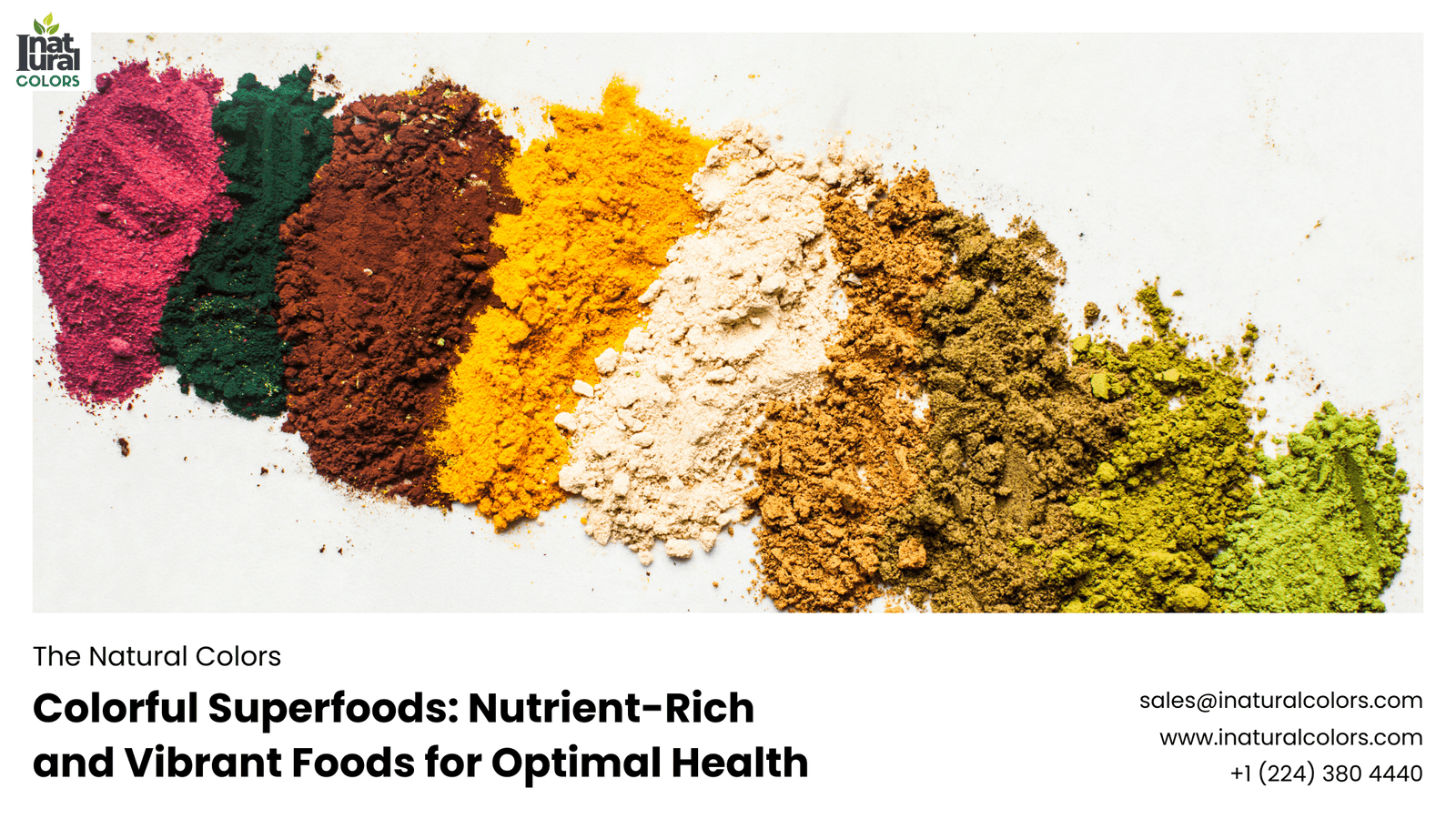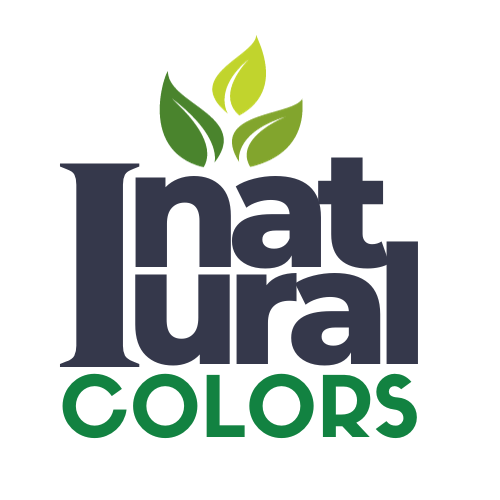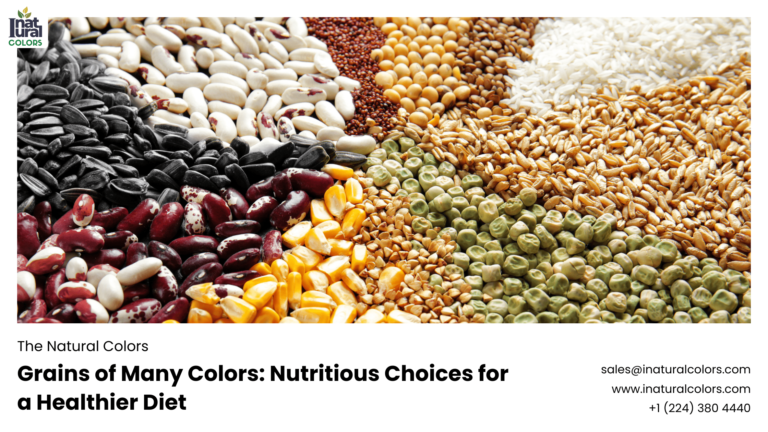Beautiful Plants For Your Interior

Colorful Superfoods: Nutrient-Rich and Vibrant
Introduction
Ever noticed how the most vibrant fruits and vegetables tend to be the most nutritious? It’s not a coincidence! These colorful superfoods are packed with nutrients and health benefits. But what exactly makes these foods “super”? And why are their colors so significant? Let’s dive into the rainbow of nutrition and find out.
What are Superfoods?
Superfoods are nutrient-rich foods considered to be especially beneficial for health and well-being. They are often packed with vitamins, minerals, antioxidants, and other essential nutrients that help our bodies function optimally.
The Importance of Color in Superfoods
The bright and varied colors of superfoods aren’t just for show. These colors indicate the presence of specific nutrients and phytochemicals, each offering unique health benefits. Essentially, the more colorful your plate, the better your nutrition.
The Science Behind Colorful Superfoods
Phytochemicals and Their Role
Phytochemicals are natural compounds found in plants that contribute to their color, flavor, and resistance to disease. These compounds are also incredibly beneficial to human health, offering protection against chronic diseases like cancer and heart disease.
Antioxidants: The Colorful Powerhouses
Antioxidants are molecules that fight free radicals in the body, preventing cell damage. Many colorful superfoods are high in antioxidants, which can help reduce inflammation, slow the aging process, and boost overall health.
Red Superfoods
Tomatoes: The Lycopene Powerhouse
Tomatoes are rich in lycopene, a powerful antioxidant known for its cancer-fighting properties, particularly prostate cancer. They also support heart health and skin health.
Strawberries: The Heart Health Heroes
Strawberries are packed with vitamin C, manganese, and antioxidants. They help improve heart health, control blood sugar levels, and boost immunity.
Red Peppers: The Vitamin C Giants
Red peppers are an excellent source of vitamin C and antioxidants. They support a healthy immune system, improve eye health, and reduce the risk of chronic diseases.
Orange Superfoods
Carrots: The Vision Boosters
Carrots are high in beta-carotene, which the body converts to vitamin A. This vitamin is crucial for good vision, immune function, and skin health.
Sweet Potatoes: The Beta-Carotene Kings
Sweet potatoes are another excellent source of beta-carotene. They support healthy vision, enhance immune function, and improve gut health due to their high fiber content.
Oranges: The Immunity Boosters
Oranges are famous for their high vitamin C content, which boosts the immune system, promotes healthy skin, and aids in the absorption of iron from plant-based foods.
Yellow Superfoods
Turmeric: The Anti-Inflammatory Superstar
Turmeric contains curcumin, a compound with powerful anti-inflammatory and antioxidant properties. It can help manage chronic inflammation and support overall health.
Pineapples: The Digestive Aids
Pineapples are rich in bromelain, an enzyme that aids digestion. They also provide antioxidants, boost the immune system, and reduce inflammation.
Bananas: The Potassium Providers
Bananas are a great source of potassium, which helps regulate blood pressure and supports heart health. They also provide quick energy and aid in digestion.
Green Superfoods
Kale: The Nutrient-Dense Champion
Kale is incredibly nutrient-dense, offering high levels of vitamins A, C, and K, as well as minerals like calcium and iron. It supports bone health, eye health, and immune function.
Avocados: The Healthy Fat Source
Avocados are rich in healthy monounsaturated fats, which support heart health. They also provide fiber, potassium, and a variety of vitamins and minerals.
Spinach: The Iron-Rich Leafy Green
Spinach is a fantastic source of iron, which is essential for blood health. It’s also packed with vitamins A, C, and K, and antioxidants that support overall health.
Blue and Purple Superfoods
Blueberries: The Antioxidant Powerhouses
Blueberries are renowned for their high antioxidant content, particularly anthocyanins, which protect against oxidative stress and reduce the risk of chronic diseases.
Purple Cabbage: The Heart Health Protectors
Purple cabbage is rich in antioxidants and fiber, promoting heart health and reducing inflammation. It also supports digestive health and provides a variety of vitamins and minerals.
Eggplants: The Brain Boosters
Eggplants contain nasunin, an antioxidant that protects brain cells from damage. They also provide fiber, vitamins, and minerals that support overall health.
White Superfoods
Garlic: The Immune System Enhancer
Garlic is known for its immune-boosting properties, thanks to its high sulfur compounds. It also supports heart health by lowering blood pressure and cholesterol levels.
Cauliflower: The Versatile Nutrient Provider
Cauliflower is rich in vitamins C, K, and B6, as well as folate and fiber. It’s incredibly versatile and can be used in a variety of dishes to boost nutritional content.
Mushrooms: The Vitamin D Source
Mushrooms are one of the few plant-based sources of vitamin D, which is essential for bone health. They also offer antioxidants and boost the immune system.
The Benefits of a Colorful Diet
Disease Prevention
A diet rich in colorful superfoods can help prevent chronic diseases such as heart disease, cancer, and diabetes. The variety of nutrients and antioxidants they provide work together to support overall health.
Enhanced Mental Clarity
Superfoods like blueberries and spinach are known to enhance cognitive function and memory, helping you stay sharp and focused.
Better Digestion and Gut Health
Fiber-rich superfoods like sweet potatoes, bananas, and kale support healthy digestion and promote a balanced gut microbiome.
How to Incorporate Colorful Superfoods into Your Diet
Easy Recipes and Snack Ideas
Incorporate colorful superfoods into your meals with simple recipes like smoothies, salads, and stir-fries. Snack on fresh fruits and vegetables for a nutrient boost.
Tips for Picky Eaters
For picky eaters, try blending superfoods into smoothies, hiding them in sauces, or making fun, colorful dishes that are visually appealing.
Shopping and Storage Tips
Buy fresh, seasonal superfoods and store them properly to maintain their nutritional value. Use airtight containers for leafy greens and refrigerate fruits and vegetables to keep them fresh longer.
Potential Risks and Considerations
Allergies and Sensitivities
Be aware of any allergies or sensitivities you may have to certain superfoods. Introduce new foods gradually and monitor for any adverse reactions.
Overconsumption Warnings
While superfoods are healthy, it’s important to consume them in moderation. Overeating certain foods can lead to nutrient imbalances or digestive issues.
Conclusion
Colorful superfoods are more than just pretty to look at—they’re packed with nutrients that can transform your health. By incorporating a variety of these vibrant foods into your diet, you can enjoy a multitude of benefits, from disease prevention to enhanced mental clarity. So, why not make your plate a little more colorful today?
FAQs
- What are the best ways to store superfoods?
- Store superfoods in airtight containers, keep them refrigerated, and consume them within a few days to maintain freshness.
- Can superfoods replace multivitamins?
- While superfoods are nutrient-dense, they should complement a balanced diet rather than replace multivitamins. It’s best to get nutrients from a variety of sources.
- How can I introduce superfoods to children?
- Blend superfoods into smoothies, incorporate them into familiar dishes, and make meals colorful and fun to encourage children to try them.
- Are there any superfoods that help with weight loss?
- Yes, superfoods like kale, blueberries, and sweet potatoes are low in calories and high in fiber, which can help with weight management.
- What are the best seasonal superfoods?
- Seasonal superfoods vary by region but often include berries in summer, root vegetables in fall, leafy greens in spring, and citrus fruits in winter.



